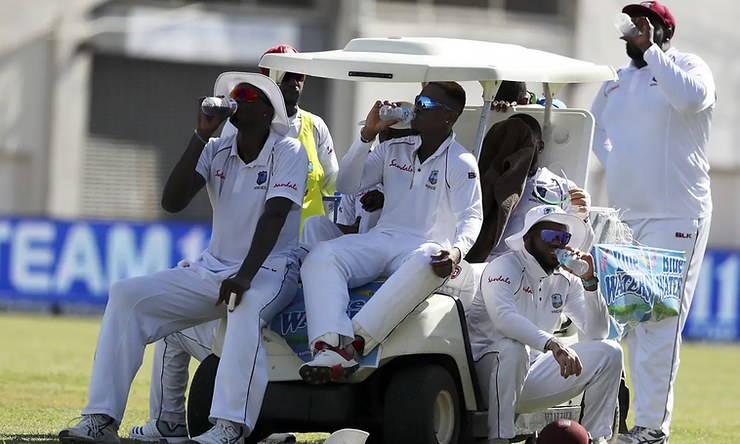By: Claire Cao
As the world faces the hottest summer ever recorded, many athletes and sports have had to brace themselves against the unpredictable and intense weather. Since cricket demands long hours of intense outdoor activity, it has been hit the hardest by global warming. However, as temperatures only continue to climb changes must be made for the safety of athletes and the future of cricket.
Cricket is the second most popular sport in the world, with billions of players and fans worldwide. The sport is most popular in Southeast Asia and in the West Indies, which is also a region that has been severely impacted by heat waves, monsoons, and heavy precipitation this summer. Cricket matches are notoriously exhausting, taking up to five full days to complete. It is challenging for players to perform in the suffocating humidity for as long as eight hours at a time.
This scorching summer has proven that heat is unbearable for everyone, especially for athletes exercising non-stop for five days in the sweltering heat. In June, temperatures soared to 111 degrees at a cricket match in Multan, Pakistan – making it nearly impossible for athletes and spectators to stay hydrated in such hazardous weather.
In a 2019 study on cricket, researchers found that a cricket generates the same amount of heat over the course of a day as running a marathon. While runners can wear lightweight gear to improve ventilation, cricket players are equipped with thick padding that only increases body temperatures. During the short breaks, players wore ice packs to keep themselves cool. As temperatures continue to rise, cricket players may not be able to regulate their body temperatures in the heat resulting in heat strokes and other heat-related injuries.
Unfortunately, cricket players must face the entire spectrum of extreme weather which includes intense rain. Cricket is nearly impossible to play in the rain. In July, the West Indies team abandoned a match in Dominica and shortened others in Guyana and Trinidad because of rain and waterlogged fields. However, climate experts predict frequent intense precipitation events due to the deteriorating climate. In the near future, cricket may go for good due to weather conditions.
Currently, cricket is becoming increasingly unsustainable due to fluctuating temperatures.
However, the International Cricket Council has declined to comment on a call for change and has also not addressed any of these issues. Opting to stick to tradition may result in the end of cricket. David Goldblatt, the author of a 2020 report on sports and climate change, warns that, “Cricket really needs to get it together. A whole bunch of trouble is really not far away.”
The International Cricket Council must implement reforms to ensure that cricket has a future for all the athletes, fans, and people around the globe. We have an opportunity to predict issues in the future and respond accordingly to prevent situations from worsening. We must take action sooner rather than when it’s too late to save the future of cricket.
Source:











